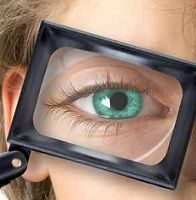Article
Immune Modulation Facilitates Repair, Regeneration of Retinal Cells
Author(s):
“MANF supplementation to photoreceptors transplanted into congenitally blind mice increased integration efficiency and accelerated and improved visual function recovery,†according to the study.

First noticing it in flies, researchers from the Buck Institute claim to have found a previously undetected immunomodulatory function that could be useful in undoing the damage wrought on our eyes over time. Mesencephalic astrocyte-derived neurotrophic factor (MANF) contains the function, which is able to convert inflammatory immune cells into reparative cells.
Researchers determined MANF was secreted in flies as an immune response to retinal damage, and was observed to begin the transition from inflammation to repair. The same process was seen to occur in mammals, and studies are ongoing in mouse and human cells.
The hope of this study is that MANF can both promote healing and facilitate more successful cell transplantation, which could benefit a wide array of age-related health conditions.
Currently, the success of stem cell implantation has been extremely limited (in the testing that has been done on mice), because only approximately 1% of transplanted cells survive their new environments. MANF may significantly change that success rate. Results so far are promising: “MANF supplementation to photoreceptors transplanted into congenitally blind mice increased integration efficiency and accelerated and improved visual function recovery,” according to the study.
“Focusing on immune modulation to promote a healthy repair response to tissue damage rather than a deleterious inflammatory response is a new frontier in aging research,” says Heinrich Jasper, PhD, Chief Scientific Officer at the Institute. The study highlights how valuable integrated research on both invertebrates and vertebrates alike can be in opening the doors to significant advancements.





